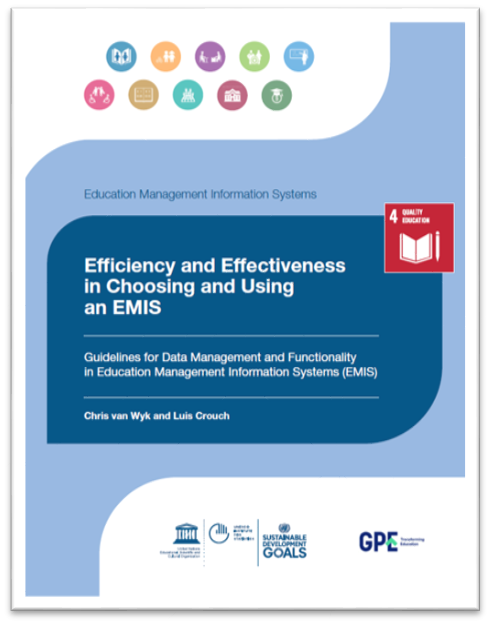Efficiency and Effectiveness in Choosing and Using EMIS
This aim of this report is to assist countries to make a more informed choice in relation to EMIS by developing a set of standards to illustrate what an EMIS must be able to do, in order to supply accurate, valid information to education sector policymakers and school managers and international organizations to whom most countries owe reporting.
Download: Guide English - Guide French - Guide Spanish


What is an EMIS?
"An EMIS can be defined as ‘a system for the collection, integration, processing, maintenance and dissemination of data and information to support decision-making, policy analysis and formulation, planning, monitoring and management at all levels of an education system. It is a system of people, technology, models, methods, processes, procedures, rules and regulations that function together to provide education leaders, decision makers and managers at all levels with a comprehensive, integrated set of relevant, reliable, unambiguous and timely data and information to support them in completion of their responsibilities'."
(UNESCO 2019)
EMIS Architecture
The EMIS architecture underpins the way in which data are collected, stored and reported. The components of any software solution include data collection, database management and utilization (which includes analysis and reporting tools). The most common components of any EMIS data architecture and guides include data collection, data management and data utilization
Buyer’s Guide
The “Buyer’s Guide” sets out the standards of functionality for an EMIS, regardless of the actual method of acquisition or development. Thus, this section of the guide provides a detailed overview of the most common components of any EMIS architecture and its related functions, activities and processes, from data collection to data processing and storage to data analysis, reporting and dissemination.
User’s Guide
The User’s Guide sets out processes, procedures and practices for collecting, processing and disseminating education data to ensure the production of quality data – namely, data that is complete, relevant, accurate, timely, and accessible.
The User’s Guide relies on the EMIS production life cycle as a lens to determine all the key activities in the data collection and used processes at all levels, from national to subnational to schools.
UNESCO. (2019). Retrieved from: https://learningportal.iiep.unesco.org/en/glossary/educational-management-information-system-emis. Accessed November 2019.